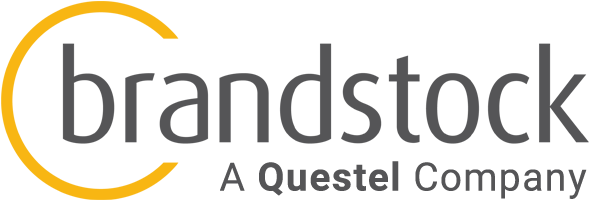How to Register a Trademark: What to Do and What Not to Do When Getting Started
When you have a new brand, product, or even an existing business, it’s of the utmost importance that you learn how to protect it. It’s not something you can afford to leave to chance or the unknown.
We’ll be taking a close look at what some companies have done in the past that can serve as examples of best practices—as well as what might be better to avoid. By the end of this post you will be properly equipped with ways to not only keep your brand from harm but also with ways that you can continue to strengthen it once all the paperwork is complete (as the journey doesn’t end just because fees are paid and documents are signed).
Even if you have an organization that reaches across the globe, we have laid out the key details you’ll need when learning how to register a trademark both locally and internationally.
Errors in Trademark Registration: Learning from the Mistakes of Other Businesses
Consider this a “what not to do” when taking the steps to ensure your brand and its products or services are properly protected. Some are more common blunders than others but it would do you well to have the knowledge in your back pocket so all can be easily avoided.
Always Clear Your Proposed Trademark
Imagine you’ve spent time and money creating the perfect name and logo for your brand and you’ve placed it on all your merchandise and marketing materials. Then someone, who has a conflicting trademark, has the nerve to try to stop you from using everything you’ve created and invested in. As scary as it sounds, they may have that right.
Failure to clear a proposed trademark before deploying it is arguably the most common, although ironically also the most avoidable, error made in the course of registration. It’s crucial that you check the IP register to ensure that a proposed mark is available for use. A trademark clearance search will indicate whether any identical or similar marks already exist and whether any conflicts could arise that relate to the goods or services intended to be offered under the new mark.
Even if you use your brand in the title of your business, registering your business name on a commercial register is not the same thing as registering your trademark, and may only prevent others from registering the exact same name. Also, just because you have registered your company name does not mean that you have a right to use that same name on products or services.
Make Your Brand Distinct
A mark is not permitted to be registered as a trademark if it’s not distinctive from your competitors. A descriptive word mark is far less distinctive than a colorful graphic mark. For example, a simple adjective such as “fantastic” would not be distinctive. Few famous trademarks rely on a word or phrase alone, thus distinctive graphic marks can be seen to be far more successful in fulfilling the inherent function of a trademark.
There is also the concept of “living dangerously” to consider, as many firms have been experimenting with precarious registration tactics, such as attempting to register a brand similar to that of another established trademark. It is typically done in order to exploit potential consumer confusion but is quite risky and we do not recommended this approach. In these situations, businesses need to strike the right balance across all legal and business considerations to avoid liability for infringement. Even slightly miscalculating this risk can prove disastrous for a business.
Let’s see how these types of missteps have played out for business entities in some example cases. Seeing them in action will help further clear up the “why” behind these not being recommended avenues when going about registering your trademark.
Cases to Examine and Situations to Avoid
Let’s examine several cases in which the brands that have come before you missed some key factors that should have been more carefully considered in their trademark registration. These organizations learned the hard way, but with our guide you fortunately won’t have to struggle to understand what is necessary and what is not.
Hisense v Bosch Siemens HiSense
The Chinese company Hisense, and the German company Bosch Siemens were parties to a protracted trademark infringement battle due to a near identical mark being used for similar goods. The first to register its mark for the sale of home electronic goods was Hisense, registering their mark in China in 1993. Seeing their success in the Chinese market, Bosch Siemens sought to register their own “HiSense” mark in Germany and the EU, also for home electronic goods. The two signs were nearly identical. When Hisense exported home appliances into Europe and Germany, Bosch Siemens sued for infringement of their registered HiSense trademark.
The Hisense group was prominent in the home electronics market but did not match the international renown of Bosch Siemens, which may have formed part of their rationale for their attempt to take over the mark. Despite this, Hisense was unwilling to part with the brand they had sold goods under in more than 100 countries and leveraged the growing influence of the Chinese economy.
Eventually, in 2005, the two businesses reached a settlement deal, with the end result being that Bosch Siemens transferred their mark to Hisense. If Bosch Siemens’ HiSense brand had been registered for goods other than home electronics, then the Chinese Hisense may not have been successful in their counterclaim for infringement.
United Biscuits Ltd v ASDA Stores
ASDA, a supermarket chain in the UK, sought to “live dangerously” by registering a chocolate bar under the name Puffin, which was intended to confuse consumers with the pre-existing, and well branded Penguin chocolate bar.
The similarity of the names and the branding of the two products, in conjunction with being registered for use on identical product types, meant that ASDA severely miscalculated their risk, and were liable for infringement on the Penguin brand. Potentially, if the Puffin brand had been registered and used with a different food product, this may have differentiated the brands enough to save them from liability.
Why This Matters
In any particular case, such as those mentioned above, the result can cost the “losing” party their mark, reputation, profits, and more. These examples demonstrate that it is best to err on the side of caution when registering a trademark.
We need to be careful to avoid assumptions, be aware, be diligent, and not pass over any details in the trademark registration process. It also operates as a warning to businesses to consider the market for trademarks and other intellectual property (IP) rights as global, not merely at a national or regional level.
Now that we’re aware of common things that could potentially go wrong and some areas in which other businesses have experienced confusion (or were too bold or assuming for their own good), we’re ready to move into taking the necessary steps to protect our IP assets.
Go ahead and take all of the knowledge you have gathered so far, feeling confident enough to start making moves. The action items to dive into, first and foremost, go as follows…
Taking the Right Steps to Protect Your Brand: How to Register a Trademark
With the knowledge base you have at this point, it is time to move into taking the necessary steps to protect your brand:
- As previously discussed, you’ll start by searching the Register of Trademarks in the categories required. This is a skilled task and best carried out by an expert, such as a representative from a trademark registration service who has many years of experience in this particular area. Again, this individual or company should know how to determine if prior trademarks might be conflicting. Results can be returned anywhere between one and several business days, so be patient. Once you’ve confirmed that your brand can indeed be registered, you can proceed to the next step.
- At this stage, you’ll submit a properly completed trademark application to your local Trademark Office. They will examine your application, and if accepted, your application will be sent forward for publication so that anyone who wishes to object can do so. This part of the process may take up to four months.
- Once your trademark is registered, congratulations! Your trademark has become a business asset that can be licensed or sold and it will provide legal backing for the commercial value of your brand. Keep in mind, your trademark will need to be renewed periodically, usually every 10 years (it’s wise to make a note of the next renewal date and be sure to submit the required forms in good time to keep your trademark from expiring).
If you enjoy an international brand footprint, read on so you can follow similar steps while making sure to abide by local and regional laws, as well.
Make It Global: How to Register a Trademark for International Use
Just as in the United States, if you conduct business in Europe, registering your trademark is essential to the protection of your brand and the best means of preventing others from abusing it, but the rules may be different.
Given what we now know of the importance of trademark registration and its ability to protect against financial and reputational damage to your business, you’ll want to be sure to follow these steps and pay special attention to the details that apply to international trade…
Choose the Overseas Market You Want to Enter
- One member state at a time:
- If you want to obtain protection in just one member state of the European Union, you can opt for national registration only.
- For Italy:
- In this case you will be submitting an application to the Italian Patent and Trademark Office (Ufficio Italiano Brevetti e Marchi, or UIBM) of the Ministry of Economic Development.
- For Belgium:
- If you intend to do business only in the Netherlands and/or Luxembourg, then you should opt for a regional registration and file your application at the Benelux Office for Intellectual Property (BOIP) to protect your brand in those three member states.
- More than one at a time:
- If you intend to expand your trading activity into several EU member states then the best option is to submit your trademark application to the European Union Intellectual Property Office (EUIPO) for an EU trademark (EUTM). This trademark is valid across all of the EU member states, and if new countries join the EU then your trademark would also be protected in those new member states.
Ensure Your Chosen Mark Satisfies Global Requirements
If you want to be able to register your trademark, keep in mind that every trademark must meet basic requirements of distinctiveness, extrinsic novelty, and lawfulness. We talked about parts of this earlier in the article but let’s break things down further.
- “Distinctiveness,” as you may recall, means that a mark is capable of distinguishing a product or service from others.
- A mark is not “novel” if it’s identical to an existing registered trademark or a prior pending application covering the same or similar goods and services.
- “Lawfulness” refers to ensuring that the particular use of a chosen mark would not be a breach of general law, public order, or ethical standards.
Handy New Tips for International Business
Technology has thankfully made the process of registering your trademark for overseas use even easier than it has been in the past:
- With the new guidelines introduced by Regulation EU 2015/2424, it’s no longer necessary for your mark to be graphically represented – it’s now sufficient to represent it using generally available technology, provided that the representation is clear, precise, self-contained, easily accessible, intelligible, durable, and objective.
- For EU trademarks, as for most national trademarks, you can submit your application online. For EU trademarks, online applications for a single mark cost 850 euros. (The cost of filing a printed format application is 1,000 euros, so we do suggest filing online.)
- We also recommend taking advantage of a search service for trademark applications and registrations. There is also eSearch Plus, provided free of charge by the EUIPO. Registered users can set up automatic monitoring alerts and receive a notification whenever the Office receives applications for trademarks that are in potential conflict with yours.
Regardless of the “where,” you have done a truly smart and valuable thing for your company in registering your trademark. Don’t let that work go to waste by stopping. You are just gathering the momentum you will use to propel your business ever-forward. Keep reading to discover all sorts of lucrative actions you can take and other decisions that have yet to be made. Now that your brand is protected at its baseline, unlock the full potential of a legally-backed brand with these next moves…
Post-Trademark Registration: How to Best Manage Your Brand for the Future
Once your trademark is registered, wherever in the world that may be, your work isn’t over. The following information will illustrate our favorite tricks that will help you gain some traction and popularity for your brand – and ultimately rake in revenue for your company.
Getting Your Brand out There
Popularity amongst consumers equates directly to profits, thus understanding the difference between an unknown and a well-known trademark can prove beneficial to securing the success of your business.
- It’s strongly advised that you seek the advice and support of experts at a trademark registration service to support the management of your IP portfolios. These professionals can orchestrate licensing agreements with third parties. The goods or services against which your registered mark can be used – categorised under Nice classes – can increase consumer knowledge of your mark, the more it is used. You can register your mark against a cluster of similar classes or in a variety of different ones.
- In addition, with no limit to the number of brands one entity can register, many companies choose to register a variety of different brands. Knowing this, it’s not hard to believe that the majority of household-name trademarks are currently owned by a mere dozen multinational corporations.
- If your job is beginning to feel like it’s overlapping with that of a marketing professional as far as strategies and tactics go, that’s normal. You’re playing a powerful role in building the framework for the future of your business to eventually increase your customer base.
We will see in a moment how the Dutch-British company Unilever sets a great example. They are one larger corporation that owns a variety of seemingly different brands, all living under one big umbrella. Ranging from foods to household cleaning products to toiletries, some of their famous brands include Magnum ice creams, Persil, and Dove.
Take It from a Successful Company That’s Already Implementing This
One reason Unilever has registered a variety of different brands is to try to eradicate as much competition as possible. In other words, they register different brands in direct competition with each other, within the same sector, so they can still end up winning a customer, regardless of differing consumer preferences and choices. For instance, they registered both the Flora and Bertolli brands for cooking butters and oils, and ownership of both brands has resulted in maximum sales for the company.
As far as spreading across different territories, their aforementioned Magnum brand does a good job with this. They have an EU registration for Magnum, and they registered certain variations of the brand in specific areas like the UK and Turkey. In just the same way, registrations of variations on the same brand are used to increase the company’s market presence internationally (as well as providing the opportunity to tailor a specific brand to certain territories based on market research of preferences for those areas).
Think about it this way: companies register so many different brands in order to hedge their bets, so to speak – they know that realistically only a portion of their endeavors will be successful. Thus, the more brands that are registered, the more likely they are to achieve success.
Finding Help to Register a Trademark
As you can see, knowing how to register a trademark will not only give your business legal backing for its identity, but it has a slew of other great benefits that simply cannot be ignored.
There are definitely a number of elements to be cautious of when going about trademark registration. We cannot stress enough that you enlist the help of a trademark registration service to give you the confidence that everything is being done correctly and no detail is slipping through the cracks.
You read about cases in which companies opted to go into the process all on their own and lost money or marred their reputation to some extent. You were also provided some of the best proven tips and tricks from some of the biggest players out there in the world of business. So with all this in your toolkit, it’s time for you to jump into the ring and get started.
Don’t waste any time. Why not contact us today and get your trademark officially registered? Put your mind (and the minds of your teammates) at ease. Safeguard the investment you make in your brand for years to come and reap the rewards over its lifetime!
















